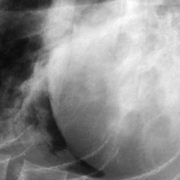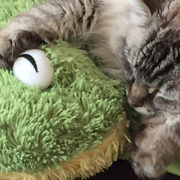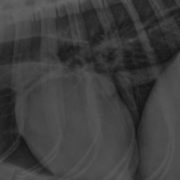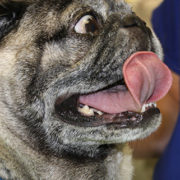Lifelong care
Dennis Chmiel, DVM, MBA
Zoetis
Posted on 2017-03-28 in General Practice
The objective of the Lifelong Care initiative is to support pet, pet owner, and veterinary practice wellness. Lifelong Care is about transforming veterinary care from an illness-based, reactive model to a healthier, proactive approach. Proactive health care shifts veterinary team focus to prevention, early disease detection, and timely treatment intervention (i.e. the opposite of “wait and see”). Lifelong Care is the extension of this proactive approach throughout the pet’s lifetime.
While there are potentially many pathways to wellness, a lifetime, proactive health care approach was proposed in 2013 by Zoetis and supported by an advisory board of industry key opinion leaders. This position paper on the Lifelong Care initiative was published in Clinician’s Brief, and encourages the veterinary profession to think and talk differently about veterinary health care.
The initiative originated from the growing awareness to the changing pet owner perceptions toward veterinary health care: many pet owners are unaware of the needs and costs necessary to keep their pets healthy for life; veterinarians often communicate care in annual increments (transactions of care) versus laying out a multi-year or Lifelong Care plan that anticipates future health care needs and costs; and subsequently, many pet owners have misconceptions and unrealistic expectations about the need for regular veterinary care over the lifetime of their pet(s). This results in fewer veterinary visits, less than optimal preventive, diagnostic, and treatment services, and reduced relevance of veterinary health care providers.
The initiative proposes a more preventive-focused approach to pet health care, rather than the reactive, fire-engine approach to medicine when a pet becomes ill or the passive “wait and see” philosophy. It is really about communication between the practice team and the pet owner, about changing the conversation to enhance ENGAGEMENT with the pet owner and an improved overall customer EXPERIENCE, improve COMPLIANCE with veterinary team recommendations, and making TRANSPARENT the understanding of pet owner’s obligation (the what, when, why, and how) with regards to their pet’s health care.
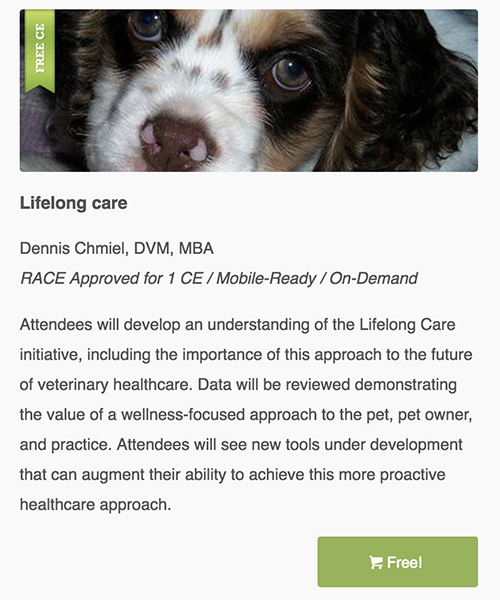 At the 2013 AAHA conference, Dr. Michael Cavanaugh, CEO of AAHA, presented findings from over 4,000 U.S. hospitals. Between 2011 and 2012, approximately ¼ of these hospitals experienced a level of practice growth that doubled, tripled, or even quadrupled the average of 5.6%. The majority of hospitals are growing less than 10% or declining. The “growers” (or “outgrowers” as they came to be called at the 2014 AAHA State of the Industry Address) grew their revenue even if the size of the practice (i.e. the number of doctors) or locations weren’t perfectly suited for growth. “Interestingly, there are serious Growers even in some of the most economically depressed areas in the country,” Dr. Cavanaugh said. So there were factors more important for growth than the socio-economics of the practice geography. One of the major findings from the AAHA study revealed that “growers” focused on strengthening client relationships by operating a “client-centered practice”. They understood that veterinary health care is not a pet business, it is a people business. The Outgrowers are successfully growing revenue at more than 10% in spite of the economy and the many other well-known challenges out there.
At the 2013 AAHA conference, Dr. Michael Cavanaugh, CEO of AAHA, presented findings from over 4,000 U.S. hospitals. Between 2011 and 2012, approximately ¼ of these hospitals experienced a level of practice growth that doubled, tripled, or even quadrupled the average of 5.6%. The majority of hospitals are growing less than 10% or declining. The “growers” (or “outgrowers” as they came to be called at the 2014 AAHA State of the Industry Address) grew their revenue even if the size of the practice (i.e. the number of doctors) or locations weren’t perfectly suited for growth. “Interestingly, there are serious Growers even in some of the most economically depressed areas in the country,” Dr. Cavanaugh said. So there were factors more important for growth than the socio-economics of the practice geography. One of the major findings from the AAHA study revealed that “growers” focused on strengthening client relationships by operating a “client-centered practice”. They understood that veterinary health care is not a pet business, it is a people business. The Outgrowers are successfully growing revenue at more than 10% in spite of the economy and the many other well-known challenges out there.
Outgrowers distinguish themselves by taking growth into their own hands. They grow because of the specific actions they take to manufacture growth. In addition to operating a client-centered practice, there were four other factors separating the growers from the decliners in the 2013 AAHA State of the Industry findings. These included a focus on preventive care, setting goals and measuring success, using online tools to keep clients engaged, and communicating the value of higher standards of care. One of the most powerful take-aways from this research was that preventive care (i.e. wellness) was a major reason for practice growth. The study helped demonstrate the importance of wellness-focused health care to drive above-average revenue.
The Health Risk Assessment is an important tool for Lifelong Care, and AAHA was an early leader in promoting the value of a veterinary HRA, having developed paper lifestyle questionnaires that can be downloaded from aaha.org. Zoetis expanded on the concept, developing an online digital communication platform to increase the widespread adoption of the HRA process in veterinary medicine. This platform became the Pet Wellness Report.
Augmenting the standard wellness exam with the Health Risk Assessment process enhances patient evaluation. It does not replace the history or physical exam, or other important layers of evaluation such as radiographs or therapeutic intervention. Rather, it adds understanding through the standardized HRA questionnaire and wellness laboratory tests to provide a more comprehensive health picture of the pet. The more complete the health picture, the more patient-specific the recommendations can be. Through this process, the pet owner’s perception of the value for the wellness exam is enhanced to help bond them more strongly to the practice.
The pet owner completed questionnaire engages the pet owner and gives the veterinarian unique insight into how the pet behaves at home by asking carefully crafted questions in an efficient manner. It is the questionnaire that helps the veterinary team identify risks within several key categories that could impact the future health of that animal. It’s important to understand that the questionnaire is NOT meant to be a stand-alone diagnostic tool. It simply serves to round out the findings gained from the history, physical exam and diagnostic testing. A health risk assessment makes sure that every pet owner gets the same questions every time, so the health care team can understand what the pet’s life is like so they can provide the pet owner with the best possible advice.
Analysis of HRA data has been published in a Technical Bulletin utilizing the PWR in dogs (2013) and a Technical Bulletin utilizing the PWR in cats (2014), reviewing 7,827 canine cases and 1,197 feline cases respectively. Both were retrospective analyses looking at over 5 years of historical Pet Wellness Report data (5/17/07 – 12/29/12) in pets of all ages coming in for their routine wellness visit.
In the nearly 8,000 dogs, the Pet Wellness Report online health risk assessment results had owners “self-reporting” that:
- 67% of dogs had contact with dogs outside the home
- 10% of dog owners were not giving any heartworm medication and 29% of owners admitted having either missed doses or being off schedule with giving doses
- 1 in 4 dog owners reported warning signs of cancer
- 1 in 4 reported signs of allergies or skin sensitivities in their dogs
- Almost 1/3 recognized warning signs of oral disease
- And 1 in 4 dog owners self-reported noticing signs of mobility issues like stiffness, lameness, and pain.
In the feline retrospective study, 28% of cat owners self-reported warning signs of oral disease, 27% reported chronic vomiting or hairballs, and 27% reported increased thirst, as examples. The HRA questionnaire can help veterinary teams identify issues that might otherwise go undiagnosed and untreated until serious symptoms become apparent.
AAHA has signaled its belief in the importance of bringing the Health Risk Assessment process to veterinary medicine to drive wellness health care through the recent endorsement of the PWR as an AAHA Preferred Business Provider. AAHA selects Preferred Business Providers based on their ability to:
Enhance the abilities of veterinarians to provide quality medical care to companion animals
Enable veterinarians to successfully conduct their practices and maintain their facilities with high standards of excellence and meet the public’s needs as they relate to the delivery of small animal veterinary medicine
The PWR Clinical Trial explored the impact of combining the Pet Wellness Report with canine and feline wellness exams. In this prospective, observational study, 19 veterinary practices compared their standard wellness exam with a PWR augmented exam within 60-90 days of the original visit for over 500 healthy dogs and cats. A medical record review was done on these patients two weeks after the PWR augmented wellness visit. Client and veterinary satisfaction along with medical and financial impacts were explored. To highlight some of the findings: 81% of veterinarians agreed the PWR enhanced exam was more valuable for pet owners than a standard wellness exam. Pet owners agreed: 86% of pet owners in this study said they felt better informed about their pet’s health with the PWR enhanced exam compared to the standard wellness exam done at the same practice, and 82% said they would recommend the PWR to a friend.
Given the challenges of demonstrating wellness exam value in today’s marketplace, the PWR is an effective and turnkey way to add client-perceived value for the routine veterinary visit. Diving a little deeper into pet owner perception is important because communication (and pet owner perception) is central to the Lifelong Care initiative. When the PWR was used to augment the routine wellness exam:
- 71% of pet owners felt more or much more engaged with their pet’s care
- 71% felt it improved the quality of care their pet received
- 82% felt the veterinarian was more or much more likely to identify health problems
- 83% felt the veterinarian was able to provide a more or much more thorough evaluation of their pet
- And 78% felt it increased the value to the pet’s health
These are powerful enhancements in the perception of value for the routine wellness visit. In this same study, new health findings were discovered in about 1/3 of both dogs and cats. From a practice management standpoint, the average pet owner spending to treat these PWR-discovered new health findings was approximately $125 for both dogs and cats. Note that pet owner spending on the treatment of these new health findings was only tracked during the initial two weeks following the PWR enhanced exam visit. Pet owner spending beyond this period was not evaluated and likely represents additional spending for some patients on diagnostics and procedures not completed within the initial two weeks post-PWR.
To quote the leading researcher in veterinary Health Risk Assessments, Dr. Bob Lavan, during his presentation of PWR data at the Western Veterinary Conference in Las Vegas, February, 2014, said “The goal of preventive medicine is to optimize health and minimize disease burden by proactively taking measures to prevent disease. Early detection allows for treatment options that may be less invasive, less expensive, and significantly more effective.”
Further reading
- AAHA Lifestyle Assessment Forms (pet, canine, feline). American Animal Hospital Association (AAHA) Web site. Published December 12, 2013. Accessed July 14, 2014.
- Goetzel RZ, Staely P, Ogden L, et al. A framework for patient-centered health risk assessment – providing health promotion and disease prevention services to Medicare beneficiaries. Atlanta, GA: US Department of Health and Human Services, Centers for Disease Control and Prevention; 2011. http://www.cdc.gov/policy/opth/hra/. Accessed July 14, 2014.
- American Animal Hospital Association. Moving from Problem Solver to Problem Preventer. Integrating the Nutritional Assessment, Preventive Health Care & Lifestage Guidelines. Lakewood, CO: American Animal Hospital Association Press; 2012. Accessed 14 July 2014.
- Three is key: How pet lifestyle discussions drive preventive care. American Animal Hospital Association Web site. Published June 18, 2013. Accessed July 14, 2014.
- Ackerman L, Ball E, Brunt J, et al. The Zoetis Lifelong Care initiative: Putting the promise into practice. North American Veterinary Conference (NAVC) Clinician’s Brief. Published July 2013. Accessed July 14, 2014.
- Partnership for preventive pet healthcare established to address declining health of our Nation’s pets press release. St. Louis, MO: Partnership for Preventive Healthcare; July 18, 2011. Accessed July 14, 2014.
- American Animal Hospital Association. Lifelong care: Health risk assessments. AAHA Trends Supplement. February 2014.
- Volk JO, Felsted KE, Thomas JG, et al. Executive summary of the Bayer veterinary case study. J Am Vet Med Assoc. 2011; 238: 1275-1282.
- American Animal Hospital Association. Lifelong care: Pet wellness report. AAHA Trends Supplement. May 2014. Accessed 14 July 2014.
- American Animal Hospital Association. Lifelong Care: A Path to Better Patient Health webinar; Driving Lifelong Care with Pet Health Risk Assessments webinar. Accessed June 14, 2014.
- American Animal Hospital Association. Lifelong Care: Caring Conversations. AAHA Trends Supplement. July 2014.
- American Animal Hospital Association. Lifelong Care: Essential skills to communicate value and drive compliance webinar. Accessed August 15, 2014.
- American Animal Hospital Association. Lifelong Care: Sustaining Change. AAHA Trends Supplement. Accessed Dec. 15, 2014.
- Davies M. Geriatric screening in first opinion practices – results from 45 dogs. J Small Anim Pract. 2012; 53(9): 507-13.
- Paepe D, Verjans G, Duchateau L, et al. Routine health screenings: Findings in apparently healthy middle-aged and old cats. J Feline Med Surg. 2013; 15(1): 8-19.
- Prosser KJ. An assessment of routine wellness blood testing in companion dogs abstract. Paper presented at: 2013 American College of Veterinary Internal Medicine (ACVIM) Forum Research Abstract Program; June 12-15, 2013; Seattle, Washington. J of Veterinary Internal Medicine. 2013; 27(3): 604-756.
- Prosser KJ. An assessment of routine wellness blood testing in companion cats abstract. Paper presented at: 2013 American College of Veterinary Internal Medicine (ACVIM) Forum Research Abstract Program; June 12-15, 2013; Seattle, Washington. J of Veterinary Internal Medicine. 2013; 27(3): 604-756.
- Knesl O, Lavan R, Horter D, et al. Pet Wellness Report: Canine health risk assessment – a review of 7,827 cases. Zoetis Technical Bulletin. May 2013. Accessed July 14, 2014.
- Lavan R, Knesl O, Holzhauer J, et al. Pet Wellness Report: Feline health risk assessment – a review of 1,197 cases. Zoetis Technical Bulletin. March 2014.
- Lavan R, Login J, Chmiel D. Health risk assessment clinical trial: Medical and financial impacts of the Pet Wellness Report combining comprehensive laboratory screening and post-exam pet lifestyle questionnaire publication pending Q4, 2014.
- Lavan R. Enhanced preventive care: Data from the first broadly available health risk assessment for dogs and cats. Paper presented at: 87th Annual Western Veterinary Conference; February 19, 2014; Las Vegas, NV.
- Cavanaugh M. 2013 AAHA state of the veterinary profession. American Animal Hospital Association (AAHA). Published October 24, 2013. Accessed July 14, 2014.
- 2014 AAHA State of the Industry Fact Sheet. American Animal Hospital Association (AAHA) and IDEXX Laboratories. Published March 20, 2014. Accessed July 14, 2014.
- Lavan RP. Development and validation of a survey for quality of life assessment by owners of healthy dogs. Vet J. 2013; 197(3):578-82.
About the author
|


 Dr. Chmiel is currently a Companion Animal Marketing Manager, Parasiticides, for Zoetis. JHe joined Zoetis (previously Pfizer Animal Health) as the New England Technical Services veterinarian after completing his MBA (2011). He previously served as the Veterinary Lead for Veterinary Digital Services and the Veterinary Lead for Veterinary Business Solutions, Companion Animal Division, Zoetis. Prior to Zoetis, Dr. Chmiel spent thirteen years in small animal clinical practice (caring for dogs, cats, and exotics), seven of which included managing a corporate (NVA) practice. He speaks regularly on veterinary market dynamics, Human-Animal Bond, Bond-Centered Practice, pet owner communication, practice strategy and management, and wellness healthcare. Most recently, he co-led the development and launch of The Pet Effect (www.thepeteffect.org) campaign to help educate pet owners on the human health benefits of animal interactions.
Dr. Chmiel is currently a Companion Animal Marketing Manager, Parasiticides, for Zoetis. JHe joined Zoetis (previously Pfizer Animal Health) as the New England Technical Services veterinarian after completing his MBA (2011). He previously served as the Veterinary Lead for Veterinary Digital Services and the Veterinary Lead for Veterinary Business Solutions, Companion Animal Division, Zoetis. Prior to Zoetis, Dr. Chmiel spent thirteen years in small animal clinical practice (caring for dogs, cats, and exotics), seven of which included managing a corporate (NVA) practice. He speaks regularly on veterinary market dynamics, Human-Animal Bond, Bond-Centered Practice, pet owner communication, practice strategy and management, and wellness healthcare. Most recently, he co-led the development and launch of The Pet Effect (www.thepeteffect.org) campaign to help educate pet owners on the human health benefits of animal interactions.
